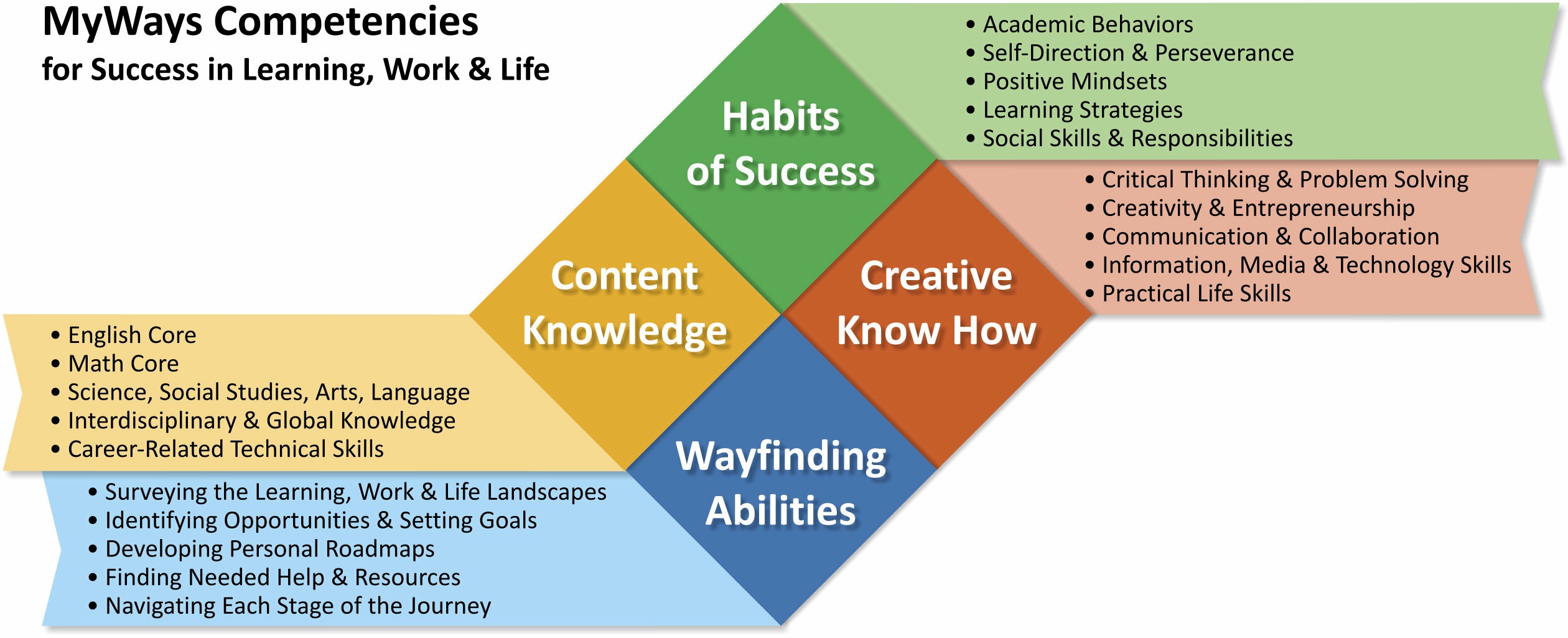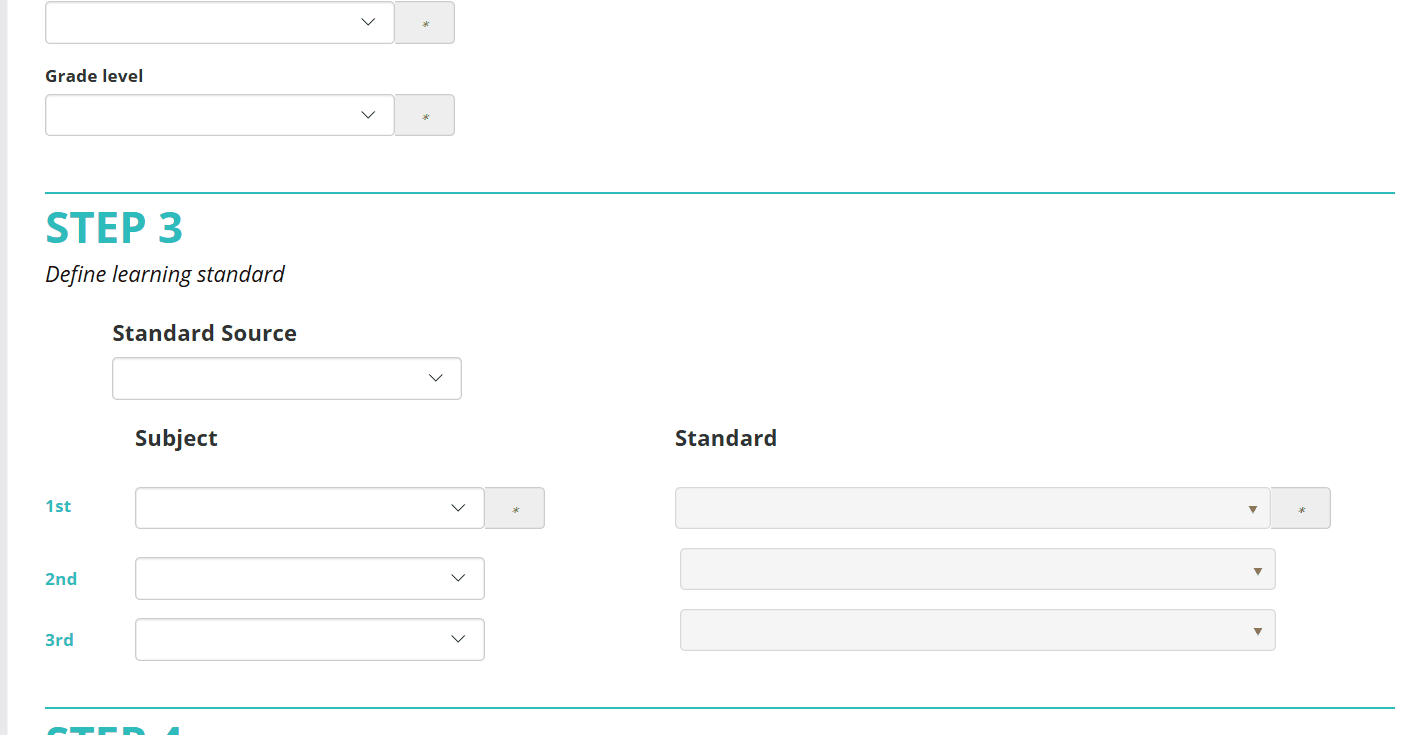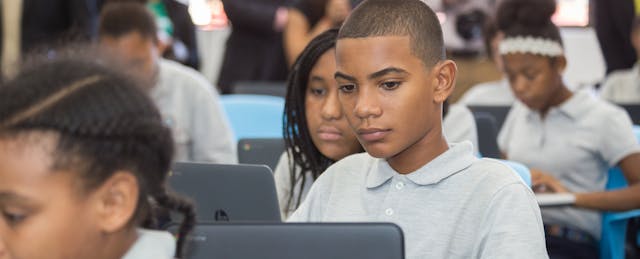How a school defines student success influences its design and impacts critical aspects such as professional learning, curriculum, assessment and school culture. This kind of shift requires thoughtfulness every step of the way, courage despite discomfort, and collaboration from the entire school community.
At Brooklyn Laboratory Charter School (LAB), the school’s co-founders, Erin Mote and Eric Tucker, are constantly on a quest to innovate and welcome the opportunity to iterate as they grow.
When they wrote the LAB charter in 2013, Mote and Tucker designed a model that included college-prep academic rigor alongside life and leadership skills, particularly entrepreneurial learning. Since the school’s launch in 2014, their vision has come to life and the school has grown to serve 479 students in grades 6-8.
That original charter included a number of components that set LAB’s model apart from other schools. Students spend more time in school, the staffing model is focused on building teacher capacity and includes tiered levels of educators, and the school uses a home-grown technology tool, Cortex, which was built in-house by Mote, a technologist by trade.
Building a Common Language Across Academic and Non-Academic Learning Experiences
For LAB, redefining student success has been a gradual evolution. During the 2014 to 2015 school year, LAB’s first operational year, school leaders focused on implementing an academic model that supported both student and adult learning. In that year, high achievement in the rigorous college-prep model was what LAB would have considered student success.
Toward the end of its first year, LAB was introduced to a draft of the MyWays Framework, developed by Next Generation Learning Challenges (NGLC), which outlines 20 competencies that students need for future success. The competencies are grouped into four quadrants: Content Knowledge, Creative Know-How, Habits of Success and Wayfinding Abilities. The framework came at the perfect time as Mote and Tucker were investigating how to incorporate essential non-academic skills that supported their shifting vision of student success.

The following year, LAB prioritized strengthening their programming for less traditional activities such as robotics, student council and video game design, with an emphasis on explicitly connecting these experiences to specific competencies in the framework.
Before year three, Mote and Tucker noticed that students had one language and set of skills for academic classes and another for non-academic. This was causing students to “code-switch” across classes, so the duo concentrated on building a common language around the twenty-first century habits they were hoping to develop across all learning experiences. Working with NGLC, they considered how the quadrants and competencies could be incorporated into the school’s model and specifically, the school’s technology. So they began the 2016-2017 year with the goal of using Cortex to operationalize the MyWays competencies, making them more accessible for teachers and making both academic and non-academic habits an area of focus for students.
Implementing a New Set of Competencies
Not surprisingly, a school promising to educate next generation learners relies on personalized technology to keep them on track. Mote and Tucker experimented with several existing student information systems (SIS) and learning management systems (LMS) while they were planning LAB, but none of them felt right. In 2014, Mote built Cortex, a web-based SIS and LMS platform. Over the past three years, Cortex has grown to serve over 7,500 student users across the country.
Cortex captures data to create a student profile, enables teachers to create playlists that guide students through their learning, and allows users to personalize learning plans based on several sets of standards. In fall 2016, Mote integrated the MyWays framework into Cortex so that when creating an assignment or assessment, a teacher could select the specific quadrant and competencies being targeted. “With this integration, the teachers at LAB can tag content in multiple ways, allowing them to celebrate student growth, project completion, and absolute academic performance,” Tucker shares.

In some cases, the framework’s quadrants are central to course design, impacting curriculum, instruction and the student experience. Eighth graders who are taking a capstone course on U.S. Foreign Policy have to complete a research project and presentation. Using Cortex, their teacher is able to assess and give feedback on reading and writing standards, and also tag the “communication & collaboration” competency from the Creative Know-How quadrant of the framework. This encourages the teacher to intentionally emphasize skills like teamwork, leadership, and shared responsibility.
Cortex has helped make the competencies more explicit for teachers, but LAB’s work with MyWays goes beyond technology. It has inspired LAB’s leaders to add new components to the curriculum. This year, for example, LAB partnered with Alpha Public Schools to incorporate their Personalized Leadership Training (PLT) program, a student leadership development program paired with an open-source social and emotional learning (SEL) curriculum. LAB has also worked with Valor Collegiate Academies to implement Circles, a highly structured SEL process used by students to build and repair relationships.
Tucker and Mote see a lot of promise in these recent changes; they also know that tailoring their program to meet their students’ needs will require overcoming some obstacles.
Challenges with Shifting How to Measure Student Success
The process of redefining student success is not without its challenges; one of the greatest being that there are more accepted measurement tools for evaluating core content areas than for non-academic competencies such as perseverance or goal setting. Mote and Tucker feel like they’re beginning to tackle this with the PLT curriculum but know that’s just the beginning. They admit that Cortex is “just a tool,” and that much of the work that lies ahead is developing strong curricular and assessment materials that align with the competencies in the three non-academic quadrants of the MyWays framework.
It’s also important for LAB to make sure that this work doesn’t feel like an added burden for teachers. During a professional development session in August 2016, Mote and Tucker spent two hours reviewing the MyWays Framework and how it was influencing the shift in the school’s definition of student success with LAB teachers. Those two hours weren’t enough. They want to be more deliberate about balancing professional development for core content and for the MyWays competencies to send a clear message to teachers that this isn’t just something that’s nice to have—it’s critical.
The Road Ahead
A key piece of choosing next steps for LAB is accepting that all 20 competencies don’t have to be emphasized equally in instruction and assessment. By operationalizing the competencies in Cortex, the staff can consider which are most teachable and make them an explicit part of programming. “We can take those 10,000 foot competencies, figure out which ones to prioritize and figure out how we can move the needle on some of them,” Tucker says.
The LAB high school will open in fall 2017. Mote and Tucker hypothesize that the Wayfinding Abilities quadrant will be crucial for students moving through high school and preparing for what lies beyond by engaging in internships. Mote explains, “The framework will add context and common language so that there is cohesion amongst in school and out of school experiences.”
According to Mote and Tucker, the field is in the early stages of developing resources to support the three non-academic quadrants. They are excited to participate in this work, and as a start, they look forward to seeing how other schools using Cortex tag content to the MyWays framework.
LAB is not a school to rest on its laurels. In fact, the staff pride themselves on making the necessary adjustments in order to best serve their students. Mote sums up the iterative experience at LAB by saying, “We’re constantly radically dissatisfied with what we can do with students. We always believe we can do more.”


